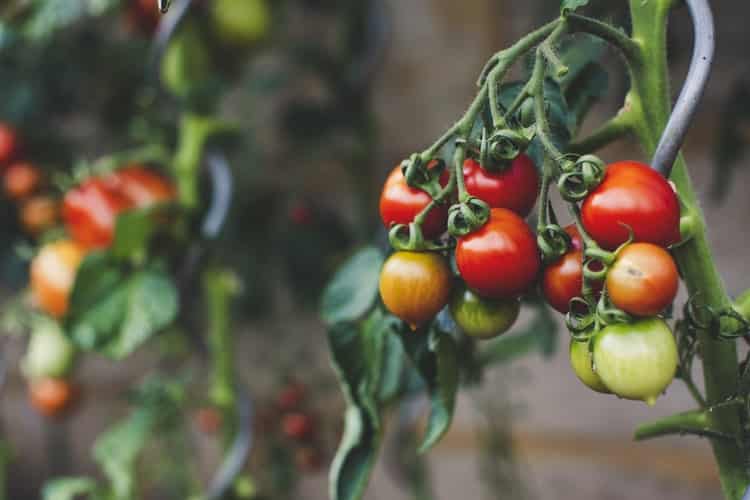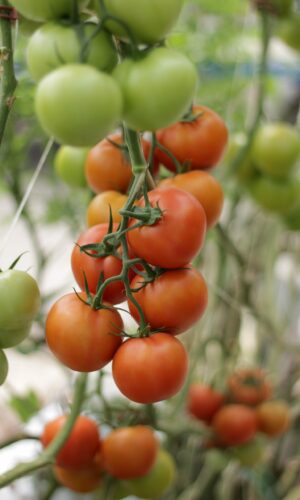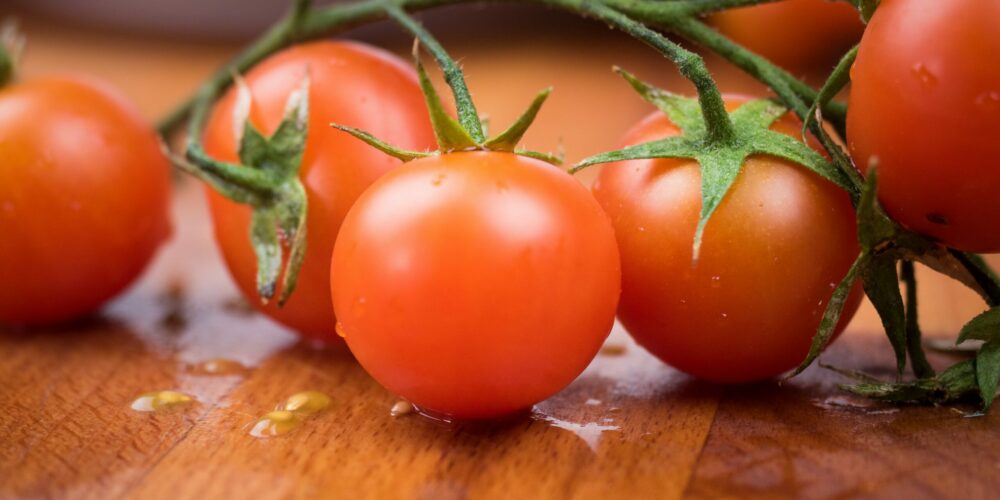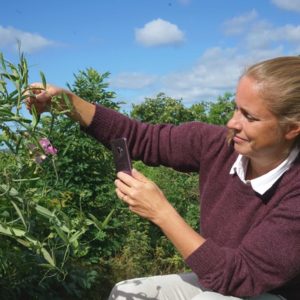Summer: the season of tomatos
During the winter and spring, I long for home-grown tomatoes. The taste can not be compared with the often watery and tasteless tomatoes you can buy in stores during the winter.
I love to try different varieties and many become recurring favorites. Tomatoes are easy to grow but there are a few things to keep in mind to avoid disappointment and get the best harvest.

Now the tomatoes have started to grow and they are in full bloom. I grow tomatoes both in greenhouses and out in pots and I usually try to choose varieties according to where they thrive best. Every year I try a few new variants, but several are recurring in my cultivation.
I usually grow some beef tomato, often Brandywine which is sweet and good. In pots, I like to grow the compact variety Vilma or the incredibly rich bush tomato 100/1000 which, just as the name suggests, produces lots of tomatoes. Other favorites are Gardner´s delight and Sungold.
Tomato plant suckers
In order for the plant to put its energy into forming tomatoes, it is important to remove the so-called “suckers”, which are the small shoots that grow in the leaf folds. Not all tomato varieties need to have their suckers removed, so it is a good idea to look at the seed bag for what applies to the variety you grow. In general, for example, the suckers of bush tomatoes are not removed. If the suckers are put into the ground, they become new plants, so do not throw them away if you have room for more plants.
In greenhouses and conservatories, it can easily become a jungle of lush tomato plants. In order for the sunlight to reach the tomatoes, I usually cut off some leaf mass from the plants when they have grown. This increases the airflow, the plants become healthier and the tomatoes ripen faster.

Taking own seeds
Once you have harvested your tomatoes, it is easy to take your own seeds from varieties you like. If you want to do that, it can be good to make sure that the variety is not a so-called F1 hybrid. F1 hybrids will not be the same variety in the next generation, which means that the seeds you take from such a variety will not taste the same as the tomato it was taken from. Fortunately, many tomatoes are not F1 hybrids and are therefore excellent for saving your own seeds. Read the seed bag or search online to see if it is a hybrid.
Common problems
Tomatoes can unfortunately also suffer from some attacks and diseases.
Tomato plants should be watered regularly and kept evenly moist to avoid, for example, pistil rot. Pistil rot causes parts of the tomato to rot. This is often seen by the tomatoes getting brown spots at the end and rotting. Some varieties are more sensitive than others but the best way to avoid pistil rot is even watering.

Potato leaf mold / brown rot affects not only potatoes but also tomatoes and easily destroys both plants and tomatoes. Potato leaf mold thrives in humid environments and it is important not to throw affected plants, soil and tomatoes on the compost as leaf mold is spread via spores. I also usually try to keep the tomato plants separate from the potatoes as much as possible. If you have problems with potato leaf mold, there are different types of tomatoes that are more resistant, such as Brandywine and Tigerella.
Other problems that tomatoes can also have are powdery mildew, spinach and gray mold and the best way to avoid such problems is to make sure you do not have too high humidity, water and fertilize regularly and remove leaves that look withered and infested.
Good luck with growing this year’s tomatoes! You can also read our post Grow to grow your own yellow tomatoes.
ABOUT THE AUTHOR

Jenny lives with her husband and two children, dog, cat, and chickens in the countryside outside Kalmar, Sweden. She grows a large part of the family’s vegetables, berries, and fruits during the summer. She likes to combine vegetables and flowers in the cultivation and aims to replace much of the garden’s lawns with flowers, shrubs, trees, and garden land.
The family lives in an old school which was built at the beginning of the 20th century and the kitchen garden is today in the same place as it was when there was a small school there. She likes to grow plants that attract pollinators and likes to take on small construction projects in the garden.
Jenny has a newly started Instagram account called karlsboskola if you want to see more of her garden and home.
KEEP TRACK ON YOUR GARDEN WITH GARDENIZE’S GARDEN APP
Gardenize is an app for gardening and cultivation where you gather information about all your plants, growing places, and activities in the garden.
In Gardenize you also get tips and inspiration about gardening!
You can download Gardenize from the App Store or Google Play, or log in to the web.
You can find more information about Gardenize on the website.

